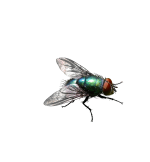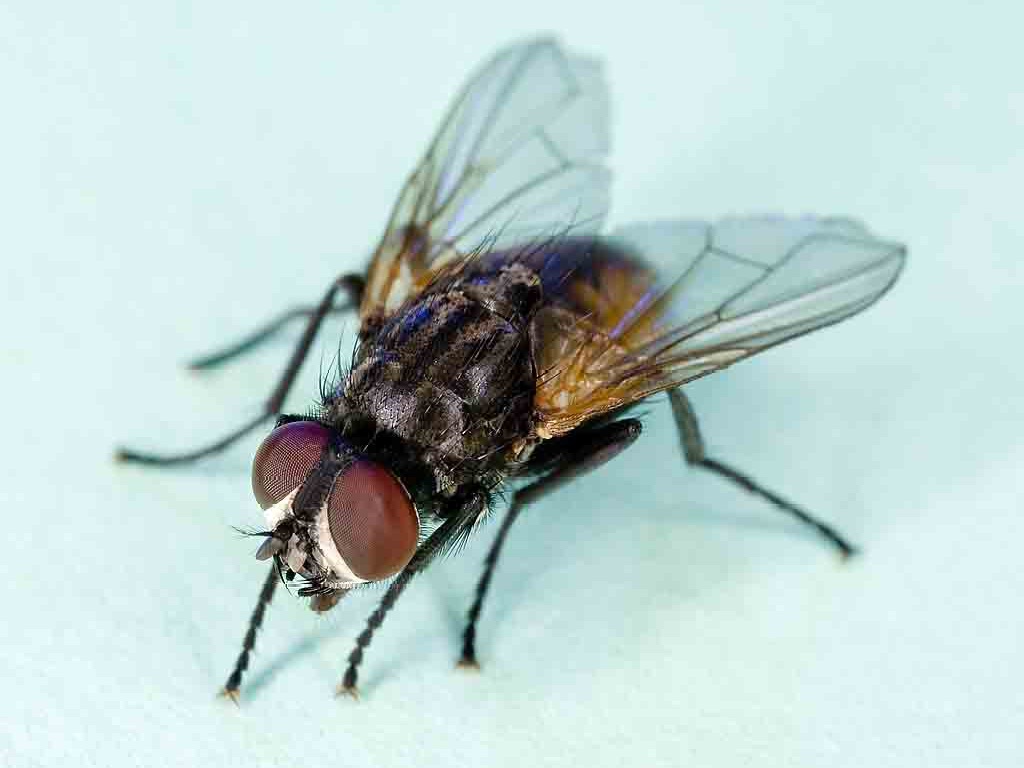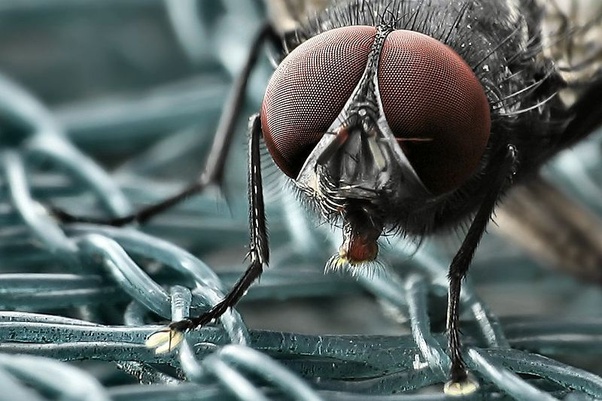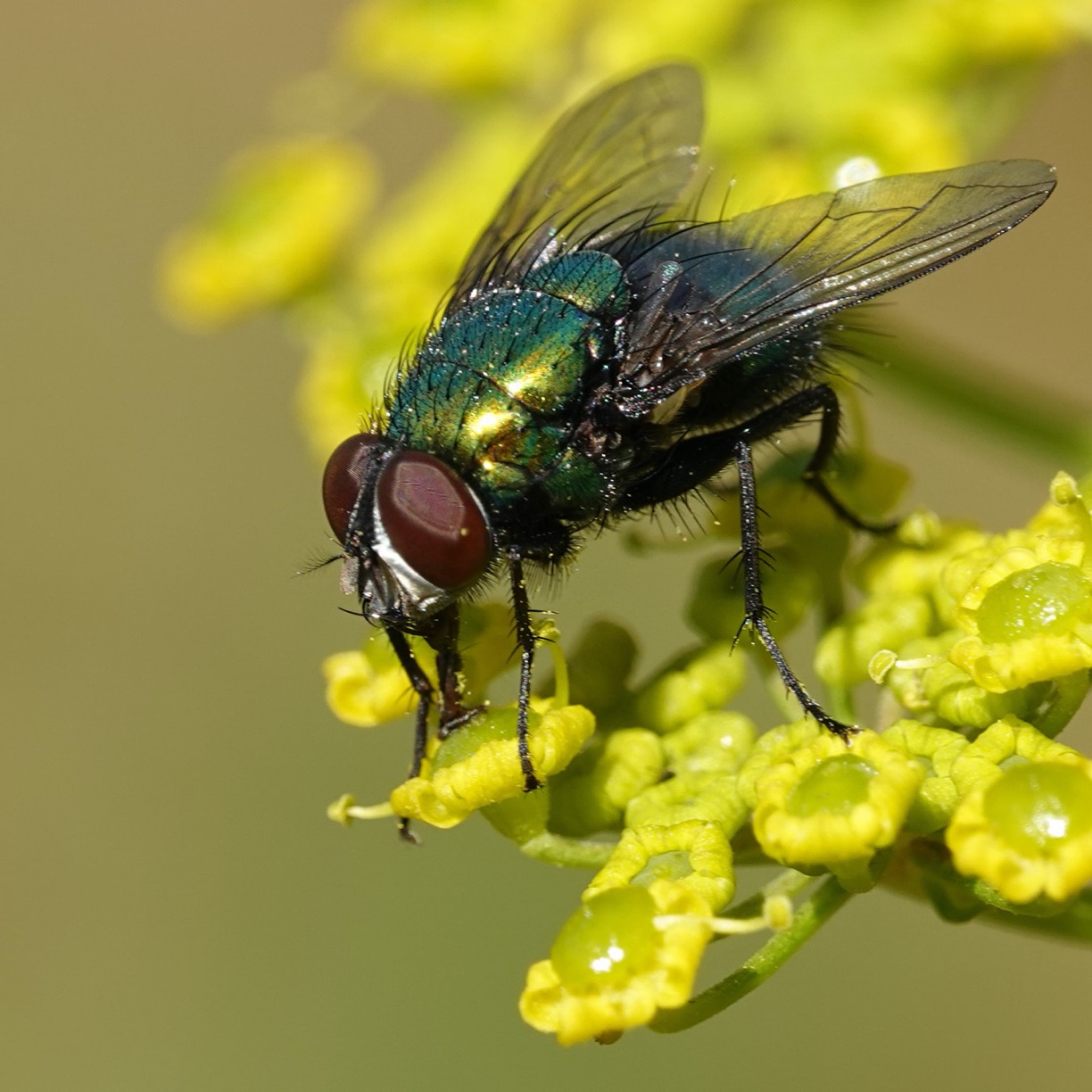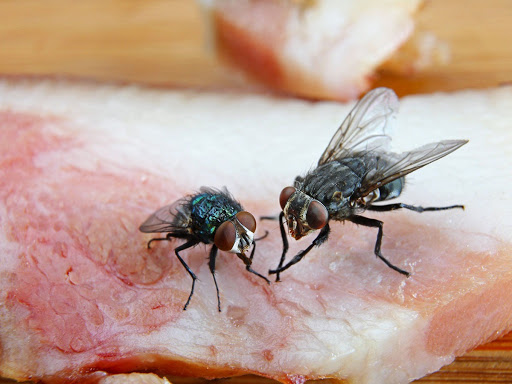The flies
Flies are part of the order of Diptera (Diptera), a name that derives from the ancient Greek δις (dis) and πτερόν (pteron) that is literally: two wings. In fact, these insects have the characteristic of using only one pair of wings to fly, while another pair is reduced to stumps and has the function of regulating the flight, informing the flies (and other similar insects) about the position of their body while they are. flying. Diptera include not only flies, but also other flying insects such as blue flies and mosquitoes. The housefly (Musca domestica), the black one with dimensions that are somewhere between a gnat and a gnat, is the most common and the one we are most familiar with.
Features
It is the most widespread insect in the world and is found mainly in temperate regions. Particularly abundant during the hot season, the fly reaches maximum activity and longevity with temperatures between 10 and 27 ° C. 4 to 8 mm long, has large compound eyes and flies with only one pair of membranous wings because the second pair is reduced and serves the animal to balance itself. The body, divided into head, thorax and abdomen, is black with lighter bands and has scattered bristles. On the head you can see a pair of short antennae and the buccal apparatus modified into a structure similar to a proboscis.
Comportamenti
The fly always lives near human settlements because it lays its eggs on decaying organic foods, especially fruit and vegetables, and on excrements, which it detects thanks to its powerful sense of smell. adult stage, occurs in less than 10 days and this allows the fly to reproduce very quickly and give life to 10-12 generations in a single summer. At the beginning of spring the insect leaves the winter shelters and begins to reproduce; the female lays in the course of her life, which on average lasts 15-20 days, about 500 eggs. It is a diurnal insect particularly active in the hottest and driest hours of the day, between 2pm and 4pm. It is unable to chew but needs liquid or dissolved food that it can suck with its trunk. It is an excellent flyer that moves around a speed of 24 km / h and flaps its wings up to 1,000 times per minute, producing a typical hum.
